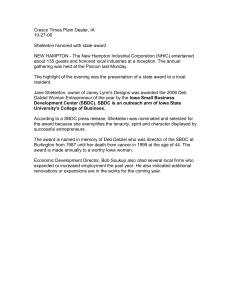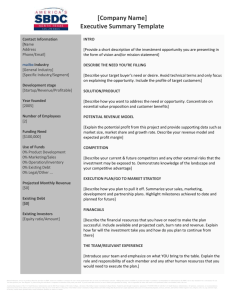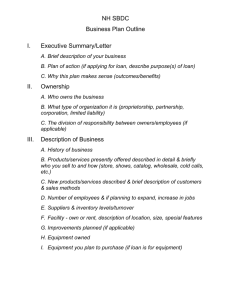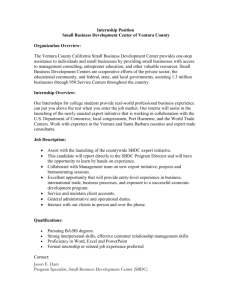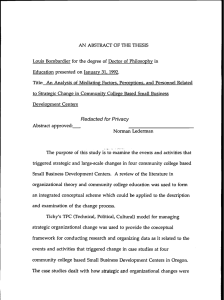New Orleans even worse up close Des Moines Business Record
advertisement
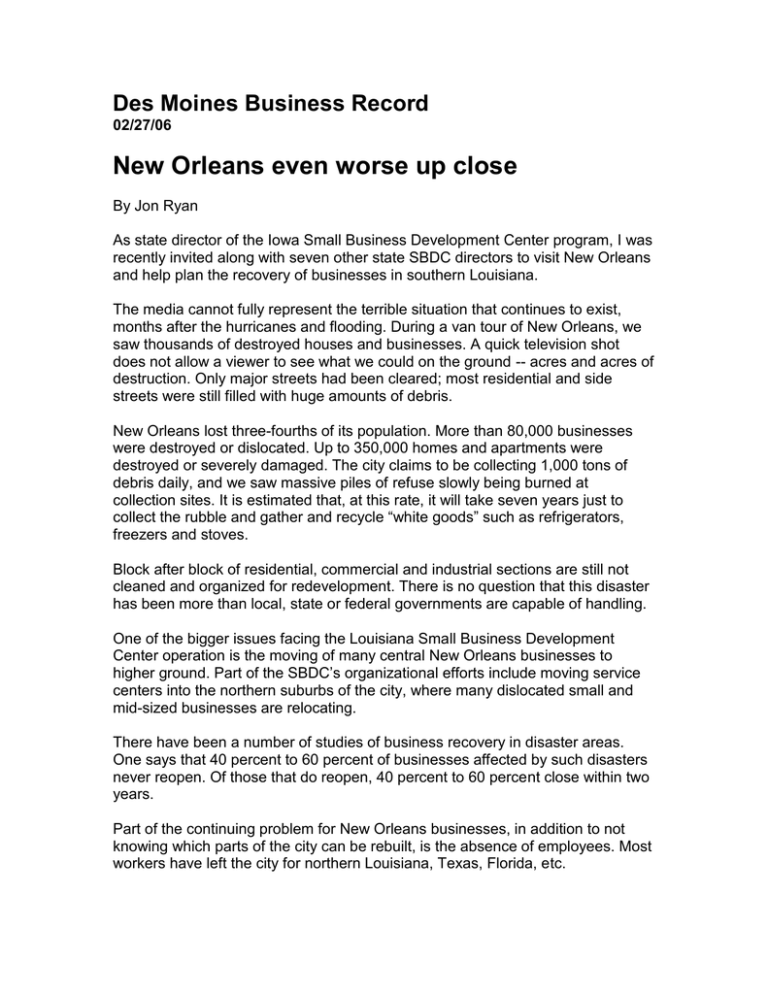
Des Moines Business Record 02/27/06 New Orleans even worse up close By Jon Ryan As state director of the Iowa Small Business Development Center program, I was recently invited along with seven other state SBDC directors to visit New Orleans and help plan the recovery of businesses in southern Louisiana. The media cannot fully represent the terrible situation that continues to exist, months after the hurricanes and flooding. During a van tour of New Orleans, we saw thousands of destroyed houses and businesses. A quick television shot does not allow a viewer to see what we could on the ground -- acres and acres of destruction. Only major streets had been cleared; most residential and side streets were still filled with huge amounts of debris. New Orleans lost three-fourths of its population. More than 80,000 businesses were destroyed or dislocated. Up to 350,000 homes and apartments were destroyed or severely damaged. The city claims to be collecting 1,000 tons of debris daily, and we saw massive piles of refuse slowly being burned at collection sites. It is estimated that, at this rate, it will take seven years just to collect the rubble and gather and recycle “white goods” such as refrigerators, freezers and stoves. Block after block of residential, commercial and industrial sections are still not cleaned and organized for redevelopment. There is no question that this disaster has been more than local, state or federal governments are capable of handling. One of the bigger issues facing the Louisiana Small Business Development Center operation is the moving of many central New Orleans businesses to higher ground. Part of the SBDC’s organizational efforts include moving service centers into the northern suburbs of the city, where many dislocated small and mid-sized businesses are relocating. There have been a number of studies of business recovery in disaster areas. One says that 40 percent to 60 percent of businesses affected by such disasters never reopen. Of those that do reopen, 40 percent to 60 percent close within two years. Part of the continuing problem for New Orleans businesses, in addition to not knowing which parts of the city can be rebuilt, is the absence of employees. Most workers have left the city for northern Louisiana, Texas, Florida, etc. Even the widely publicized rebirth of Bourbon Street is overstated. Two-thirds of those businesses are still closed or only open for minimal days and hours, because there are few employees left in the city. The Marriott hotel stays open only because it houses its wait staff and housekeeping staff in the building. So what did I learn that might help us here in Iowa? First, too few of our businesses, communities and support institutions have plans in place for disasters. At our request, support from the Iowa Homeland Security office provided training this past year to our SBDC center directors, even before the hurricane season. We will continue that effort. Also, our SBDC Web site will include more links, learning opportunities and directions. And we will be certain to direct SBDC clients to think of, plan for and be prepared for a potential disaster -- whether it’s a fire, flood or tornado. With careful and thoughtful preparation, perhaps much of the trauma can be contained and minimized. The Iowa SBDC network will be better prepared for what we hope and pray we never have to face. Jon Ryan is the state director of the Iowa Small Business Development Centers in Ames.
